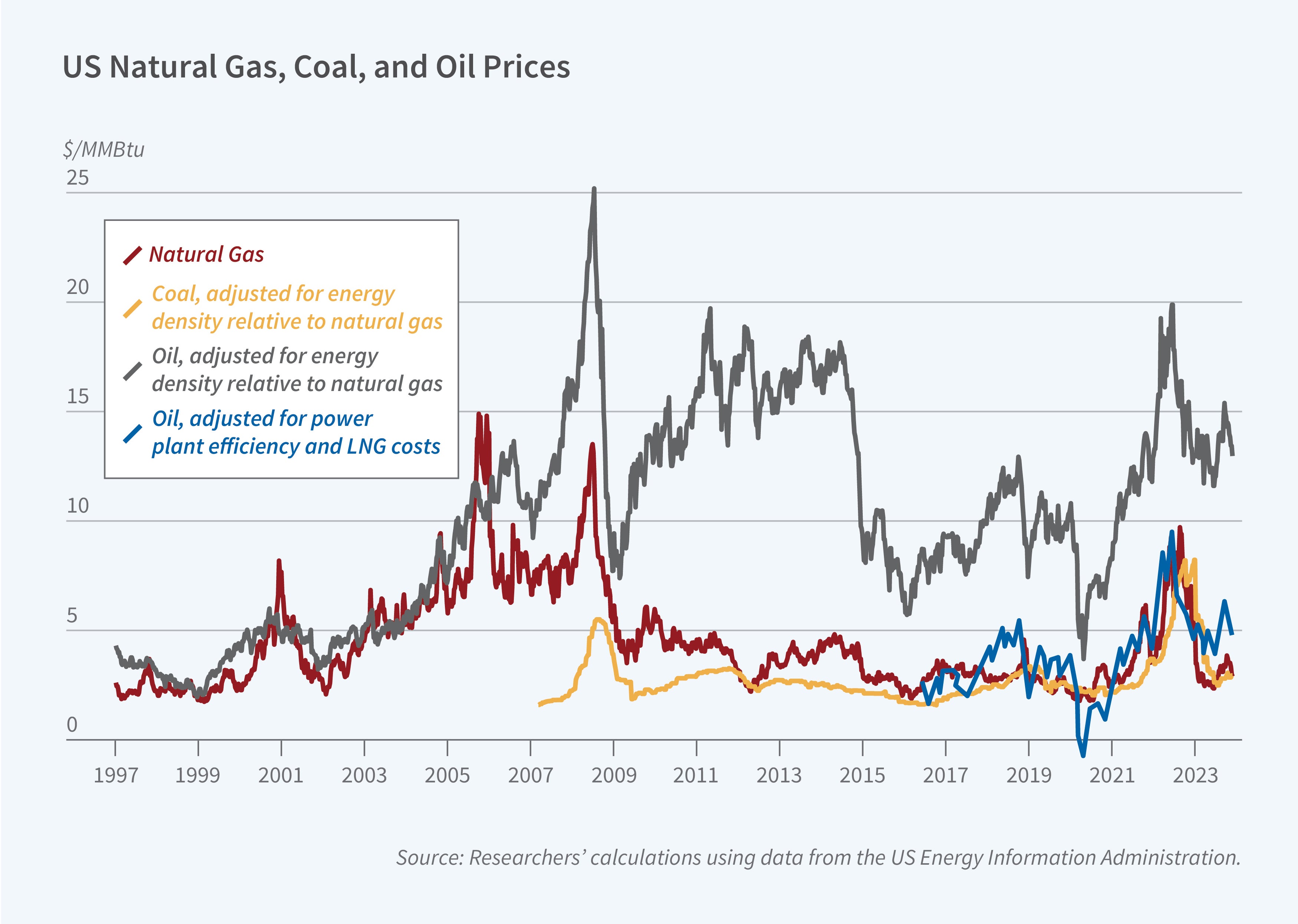LNG Exports and US Fossil Fuel Use

In less than a decade, the United States has gone from being a net importer of liquified natural gas (LNG) to the world’s largest exporter. This change resulted from two developments: the fracking revolution and the construction of a number of LNG export terminals. A decade ago, the US natural gas market was separate from the world market. Because export capacity was limited, rising domestic production due to fracking sharply reduced prices. Today, domestic and global markets are integrated. This has driven up the domestic gas price and put upward pressure on domestic coal prices because coal and gas are substitutes for power generation. Higher prices have reduced domestic demand for both fossil fuels in much the same way a carbon tax would.
In The Market and Climate Implications of US LNG Exports (NBER Working Paper 32228), James H. Stock and Matthew Zaragoza-Watkins explain that the US has gone through four distinct stages in its transformation from natural gas importer to exporter. In the first, from the 1990s to around 2006, gas and oil competed to power the steam boiler generators that utilities were bringing on line to replace aging coal-fired plants. This competition helped to align the prices of coal, gas, and oil. The surge in fracked gas, which started in the mid-2000s, initiated a second, transitory stage in which gas prices fell; oil could no longer compete in the electricity-generation business. The correlation between oil and gas prices declined. The third phase began in 2010, when fracked gas flooded the domestic market, and US gas prices became disconnected from both oil and international gas prices. Finally, when the first LNG export facility opened in 2016, the US entered the fourth and current stage. Expanding gas exports mopped up excess supplies, and domestic gas prices recoupled with oil and international gas prices.
In 2005, the US imported roughly 15 percent of the gas it consumed. By 2017, it was a net exporter and, by 2023, the world’s largest exporter. In 2005, coal generated half of the nation’s electricity. By 2020, that share was down to 19 percent, largely due to the replacement of coal-fired generation with generation from gas-powered units.
The surge in LNG exports has buoyed domestic gas and coal prices, reducing domestic consumption. The researchers estimate domestic gas prices through 2030 would be approximately 54 percent higher relative to a scenario without the export-driven recoupling to global prices. The effect of that price increase is comparable to that of imposing a $30 per metric ton carbon tax on domestic natural gas combustion. Domestic coal prices would be about 64 percent higher in 2030 under recoupling because of their connection to domestic gas prices. That amounts to about a $20 per metric ton carbon tax in terms of impact on demand.
The researchers point out that the reconnection of US gas and coal prices to international energy markets has important implications for greenhouse gas emissions. They calculate that by 2030, if gas markets remain integrated and current trends continue, the US power-generation sector will emit 145 million fewer metric tons of CO2 than it would have absent integration. This is about a one-third reduction in the CO2 emissions from the power sector, mostly due to the nation switching from fossil fuels to non-fossil alternatives.
— Laurent Belsie
This research was supported by the Salata Institute for Climate and Sustainability.


